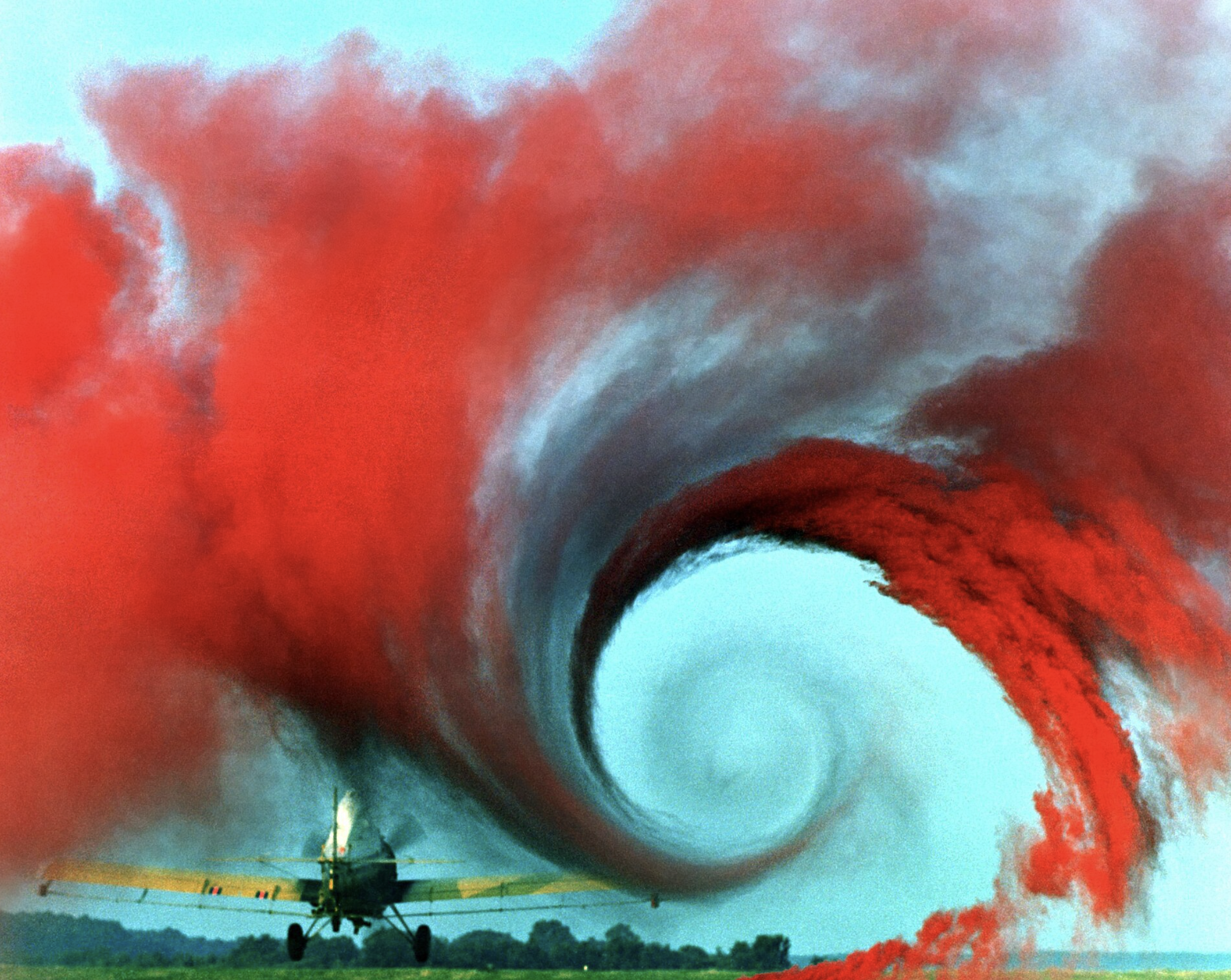While we are holding short of Runway 25 on taxiway A at KLUK, ATC tells us “Cirrus N806BP cross Runway 25, Runway 21 cleared for Takeoff, caution Wake Turbulence!” Wait… “Caution Wake Turbulence?” I thought turbulence only occurs while in flight…? Why did ATC advise us to be cautious of wake turbulence while they gave us our takeoff clearance? “…Interesting?”
Causes of Wake Turbulence and Its Importance 
What causes wake turbulence and why is it important for us to be mindful of it? First, we will talk about the creation of wingtip vortices and how it contributes to wake turbulence. Wingtip vortices are created when an aircraft starts to generate lift as it rotates off the ground. There is an area of higher pressure, which is below the wings, and it flows around the wingtips in a circular motion (vortex) towards the area of lower pressure which is above the wings. The vortices don’t stop at the wingtips as they tend to spread out and trail behind it as well. Creating what is called “trailing vortices.” What we must be cautious of being pilots is wingtip vortices are created by all aircraft producing lift, but all aircraft vary with how much vortex is being created due to some factors. This would include an aircraft’s weight, shape speed and span of its wing. Aircraft considered to be “Heavy, Clean, and Slow” would tend to create larger wingtip vortices. Think of a Boeing 747 compared to a Cirrus SR20. Since we just talked a little about the formation of wingtip vortices, we are now going to focus on wake turbulence. Wake turbulence is created when an aircraft’s trailing vortices “wake” are disturbed through the air.
Avoiding Wake Turbulence on Takeoff and Landing
Takeoff and landing are important (critical) sections of flight! Our aircraft is relatively close to the ground currently and there is not a lot of time or altitude available to regain control if we encounter severe wake turbulence. While ATC does a fairly good job of separating departures and arrivals, especially here at KLUK to allow time for the wake to dissipate, the final responsibility for wake avoidance falls back on us as the pilot! When in doubt, if we are concerned at the possibility of encountering it, we need to wait. The FAA recommends waiting at least 3 minutes to allow the wake to dissipate. If we are trailing an aircraft that is larger than us, we need to remain at or above its glide path. As we approach to land we need to reference where the aircraft in front of us touched down and make sure we land beyond to stay above its wake during this critical phase. Now it’s time to talk about what lead us to this discussion, when ATC told us on takeoff “Caution Wake Turbulence.” When we are planning on departing behind a large aircraft that recently just departed, we need to be able to rotate before the point on the runway where it took off. We also need to understand our climb performance in a sense we need to climb at a much faster rate than the aircraft that just departed.
Conclusion
As we end our discussion, its important not just in mid-air, but its relativeness to the critical phase of flight such as during takeoff and landing. Next time when you hear ATC say “Caution Wake Turbulence,” make sure you listen and are aware as it might save you and your passengers for an enjoyable flight!